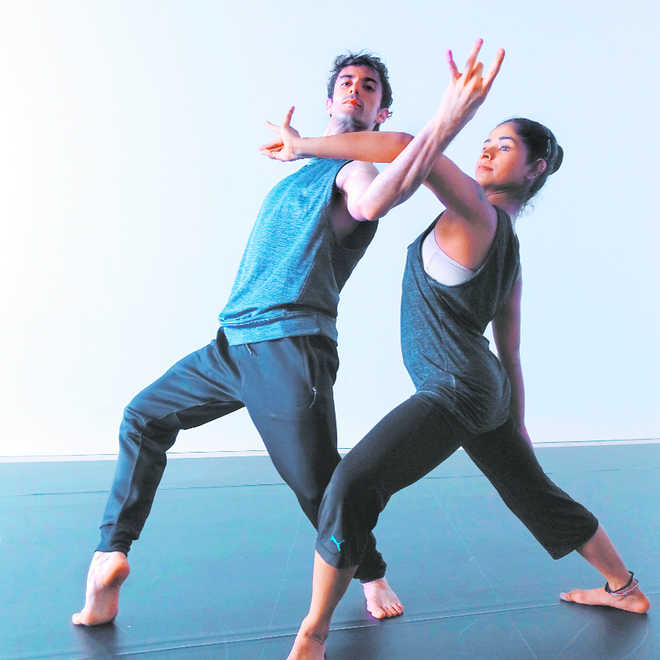
Schoolchildren enjoy Virtual Reality experience at the Aravali Utsav
Swati Rai
Art Meets Science of Everything (AMSOE), an interdisciplinary art exhibition that recently concluded in the Capital, could well be a metaphor for the way art is headed — a happy marriage of the rational and the aesthetic.
Sample this: a live art performance by the singer-artist duo of Kimberley Rodrigues and Pawas Aakrsh of The Act reflects on the paradox of being an artist. Through the use of video mapping, they create an audio-visual experience that attempts to show certain realities behind the artificial constructs around the artists. Another installation called Heair is a live audio set composed of the ambient air quality data captured in and around Delhi. It is a sonic experiment by Suvani and Manav, who have developed a software that converted the ambient live air quality figures into sounds, which were presented as a set.
While you have got to see it to believe it, art is increasingly interactive and accessible today. One can swipe on a smartphone to see exhibits in museums without stepping out of the house. Galleries and rare artists can now be viewed on digital platforms such as Google Arts & Culture, making art, like most other things in life today, just a click away.
Technology has destroyed the traditional bastions of exclusivity in making art approachable. This is also visible in how consumers interact with art and antiques. Online buyers at the Christie’s auction house grew by 70 per cent last year, with mobile devices accounting for 35 per cent of the traffic to the website. The average sale price for an online lot was $6,047 (close to Rs 4L)! Sonal Singh, director, Christie’s India, underlines the significance of virtual selling. “Online sales represent the best tool to recruit new clients, year-after-year, representing approximately 30 per cent and are from a younger age group. Artists such as David Hockney are intrigued by the possibilities the digital area offers and I believe it will continue to play an important role to a certain degree but the main collectible categories will remain in the traditional areas of painting, sculpture and photography.”
The combination of art and technology has now enabled cross-cultural bonding like never before. An interactive digital dance experience, Mix the Body, is one such instance. It has contemporary dancers from Studio Wayne McGregor, the UK, and Indian artistes from Bangalore-based Attakkalari Dance Company collaborating to create digital dance movements. A British Council initiative, it creates dance by a sequence of hand movements of the viewer on the touchscreen and by picking up music to accompany the dance. The platform then plays a full, cinematically-shot performance of the dance piece. It allows people to share their creations on social media.
So, is digital the new age artistic language? Alan Gemmell director India, British Council, agrees. “Mix the Body is part of a series of fun, digital cultural experiences that we’ve created, opening up the world of theatre, music and dance to more than 1.5 million people in over 200 countries.” Jayachandran Palazhy, artistic director with Attakkalari Dance Company feels a clear and simple vision is essential while creating a work of dance for a digital interface. “Digital platforms such as this one give us the ability to directly connect with an individual and motivate them to get involved with an arts activity. We’ve integrated digital technology to map a series of important cultural heritage interventions through our Nagarika Project. The platform aims at showcasing various concepts of the body as well as the principles of movement underlying these traditions cutting across Bharatnatyam and Kalarippayattu.”
Art is collaborative and connected; especially now when technology is accessible on the go, creativity has found newer wings to fly. Projects such as the Storytelling Forest — where each individual across the globe adds on to one shoot of the story taking lead from a previous contributor on the screen — are a metaphor for cross cultural artistic cooperation.
Not surprising then that drones are not left behind in this mix of artistic and scientific boundaries. MIT’s media lab has created an interface for drones that helps you draw your imagination. The motion-tracking pen when scribbled over a flat surface presents a picture drawn from the markers attached to the drone that senses the motion of the hand! No wonder then that MIT has christened the drawing drone a ‘flying pantograph’. A sign of the times to come? Perhaps.



























